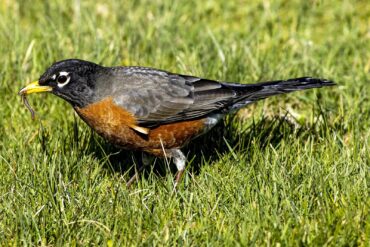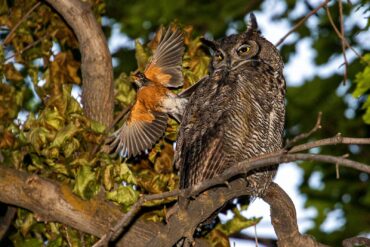
Ordinary people can do extraordinary things. One person becomes an unexpected hero. An overlooked individual suddenly has an incredible idea. A seemingly insignificant person has unknowingly touched countless lives. The possibilities are endless.
It is the same with birds. Migratory shorebirds fly thousands of miles every year to breed in the Arctic. Likewise, many songbirds fly thousands of miles in the opposite direction to winter in the tropics. On the open ocean, albatross glide on wind currents for weeks at a time without landing. Penguins and alcids are living torpedoes under water. Peregrine falcons attack prey at speeds of 200 mph. Ostriches run at a sustained pace of 37 mph.
Simply put, birds are amazing creatures. Many species have impressive abilities that are necessary for their survival.
But what about a seemingly ordinary bird with a hidden extraordinary skill? A bird that many people, even nonbirders, see every day and think nothing of it. A songbird that weighs 3 ounces and willfully goes to battle against an apex predator weighing 3 pounds or more. This extraordinary, ordinary bird is none other than the American robin.

With its orange belly and yellow bill, the American robin is one of the most commonly recognized birds of North America and a year-round resident across nearly all of the contiguous states. Some individuals are migratory, breeding across Canada and Alaska and wintering in various parts of the Southwest, Mexico, the Gulf Coast and Florida.
A member of the thrush family, the American robin is a relative of other Washington residents, including the varied, hermit and Swainson’s thrushes; Townsend’s solitaire; veery; and mountain and western bluebirds.
The American robin is at home in almost any place, from city parks to the vast wilderness. Inhabiting fields, forests and mountains, it has the most varied habitat range of any breeding songbird in Washington. A harbinger of spring, it is known for its melodic song, which resounds throughout neighborhoods and forests, particularly at dawn and dusk.
The American robin’s diet varies depending on the season. During the breeding season, robins forage on the ground, feeding on earthworms and other soft invertebrates. In a single day, a robin can consume a number of worms equal to 14 feet in length. Robins find worms by standing upright and motionless with a cocked head to listen and look for movement in the soil. When a worm is detected, it’s quickly snatched up and consumed. In winter, large flocks of robins also forage on all kinds of berries in trees and shrubs.
The female robin builds a nest of twigs, grass and mud on a horizontal branch of a tree or shrub, typically 6-25 feet above ground level. She lays four sky blue eggs that hatch after two weeks of incubation.
Because nestlings are susceptible to predation, only 40 percent of robin nests are successful. Of these, only 25 percent of fledglings survive long enough to experience winter. To compensate for these losses, monogamous pairs produce up to three broods per breeding season.
Songbirds such as the American robin are on the menu of many predators. Since the robin feeds in trees, shrubs and on the ground, it must be vigilant at all times for both terrestrial and aerial threats.
The great horned owl lives at the top of the food chain and would happily make a robin its next meal. Few, if any, other birds of prey are willing to go up against one. To put this in context, the bald eagle weighs four times as much as a great horned owl. Yet, bald eagles have been observed yielding their massive nests to great horned owls that moved in without permission.
Now cue the 3-ounce American robin. This surprisingly fierce songbird is known to attack a great horned owl, especially during nesting season. Even a perched owl trying to sleep is subject to a barrage of close fly-bys. Daredevil robins will even make contact with the unwelcome predator, kicking it in the head as they pass by.
The coordinated attack causes stress to the owl. Once it has had enough, it will move to another perch. If the owl doesn’t completely leave the neighborhood, an army of fearless robins will pursue the predator and relentlessly continue their assaults until nightfall. Not the behavior most people would expect from a seemingly docile bird that primarily dines on worms and berries.
Populations are stable and even increasing, which is encouraging in a time where myriads of songbird species are in decline. However, American robins are vulnerable to poisoning from lawn chemicals and pesticides.
Things aren’t always as they appear to be. The American robin reminds us that even the most ordinary bird can be extraordinary. A seemingly defenseless bird that will take on a great horned owl should never be referred to as “just a robin.”

























